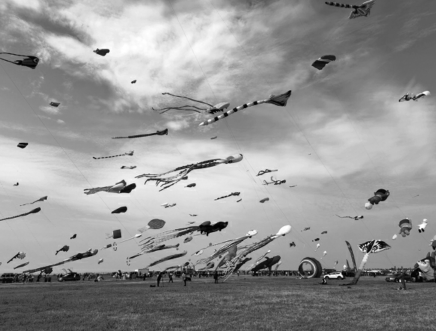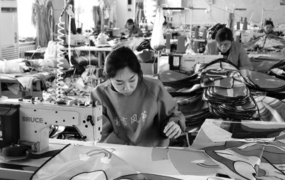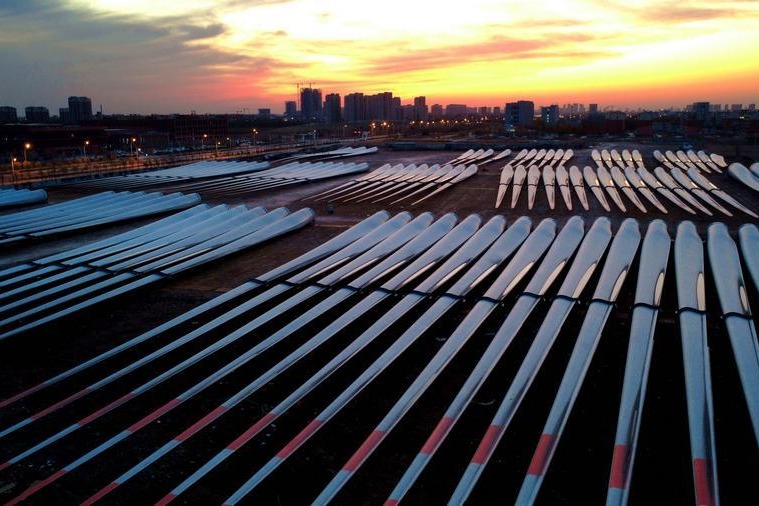'Kite capital' flies high on modernization and heritage

JINAN — In a workshop at the Yangjiabu Folk Art Grand View Garden in Weifang, Shandong province, workers are busy making kites. From design to frame making, 61 steps are required to finish making a kite.
Kite-making here dates back over 600 years. Xu Yang, an inheritor of Weifang kite art, developed a passion for the craft as a child and learned to make and paint kites at the Yangjiabu Folk Art Grand View Garden, as well as from her aunt.
"I visited my grandma every week as a kid, and often saw my aunt making kites, and I helped her by doing some drawing," says the 36-year-old. "We are a kite-making family, and it is nice to do what I love."
The Yangjiabu Folk Art Grand View Garden is the epitome of how Weifang, which is known in China as the "kite capital of the world", preserves its traditional craft and develops its cultural and tourism sectors. The Weifang International Kite Festival, which the city has held since 1984, attracts enthusiasts from all over the world.
Yangjiabu is one of three traditional woodblock print production centers in China. "From engraving and printing to packaging, all the work is done by hand," says Yang Naiqiang, 67, who demonstrates the craft to tourists.
Dedicated young people have picked up the baton from their families, who have passed the skills down the generations. Yang Jing and her husband, both in their 30s, are the 14th-generation inheritors of woodblock printing, and their family owns a century-old store.
"My husband is the only son. If we did not carry on the tradition, it would be difficult to reenter the sector in the future," says Yang Jing. Her husband learned the craft from his father and grandfather, and the couple have developed items like throw pillows and canvas bags with woodblock prints that are proving popular with customers. They also engage in heritage promotion events at schools.
Even in winter, the garden attracts visitors, with an average of nearly 1,000 a day during the off-season, and several thousand during peak season.
Weifang is known for its traditional handicrafts and cultural traditions. A number of well-known historical figures, such as agronomist Jia Sixie and poet Su Shi, were either born or worked in the region, while Gaomi, a county-level city under the jurisdiction of Weifang, is the hometown of Mo Yan, a Nobel laureate in literature.
The city is home to 17 items of national-level intangible cultural heritage, including Weifang kites, woodblock printing and paper-cutting, and to more than 100 items at provincial and prefectural levels. It was named a UNESCO Creative City of Crafts and Folk Art in 2021. In November 2023, US travel magazine AFAR listed it as one of the 25 most exciting places around the world to visit this year.
Last year, Weifang applied for 137 million yuan ($19.3 million) for the protection and passing down of cultural relics and intangible cultural heritage, including the construction of seven museums.
Apart from its focus on culture, this city with a population of 9.4 million is developing high-tech and emerging industries, and its gross domestic product ranks fourth among prefectural cities in Shandong.
"Weifang boasts of a strong agricultural base, a solid industrial foundation, deep cultural heritage, and outstanding educational and geographical advantages. The interaction between people and the economy could create new drivers for high-quality development," says Liu Yun, Weifang Party chief.
With 37 of the 41 major national industrial categories, including all 31 manufacturing categories, Weifang's latest industries include new energy storage, the metaverse and industrial mother machines (machines used to manufacture machines).
Weichai, a leading Chinese power-train manufacturer based in Weifang, has applied new-generation information technology to its smart factories, and built the world's largest diesel engine manufacturing cluster.
Through the expanded use of robots, Weichai has greatly improved efficiency, and its production line for green energy-powered engines runs on one-fifth of the previous workforce.
In a smart factory belonging to electronics supplier Goertek, components are turned into high-end virtual reality equipment. Founded in 2001, this private tech company is a global leader in terms of its shipment of smart headphones, wearables and smart speakers, and in 2022 its revenues exceeded 100 billion yuan.
Weifang's booming vocational education provides strong support for the development of emerging industries. As a national vocational education innovation and development pilot zone, it has around 60 vocational schools and 300,000 students.
"By leveraging its strengths in culture, education and technology, Weifang can greatly expand its scope for high-quality development," says Wang Zhongwu, a professor at Shandong University.
Xinhua


Today's Top News
- Xi taps China's deep wisdom for global good
- New rules aim for platforms' healthy growth
- Chinese web literature grows overseas
- Postgrad exam trend points to thoughtful approach
- World's highest urban wetland a global model
- How China's initiatives are paving a new path to a better world






























